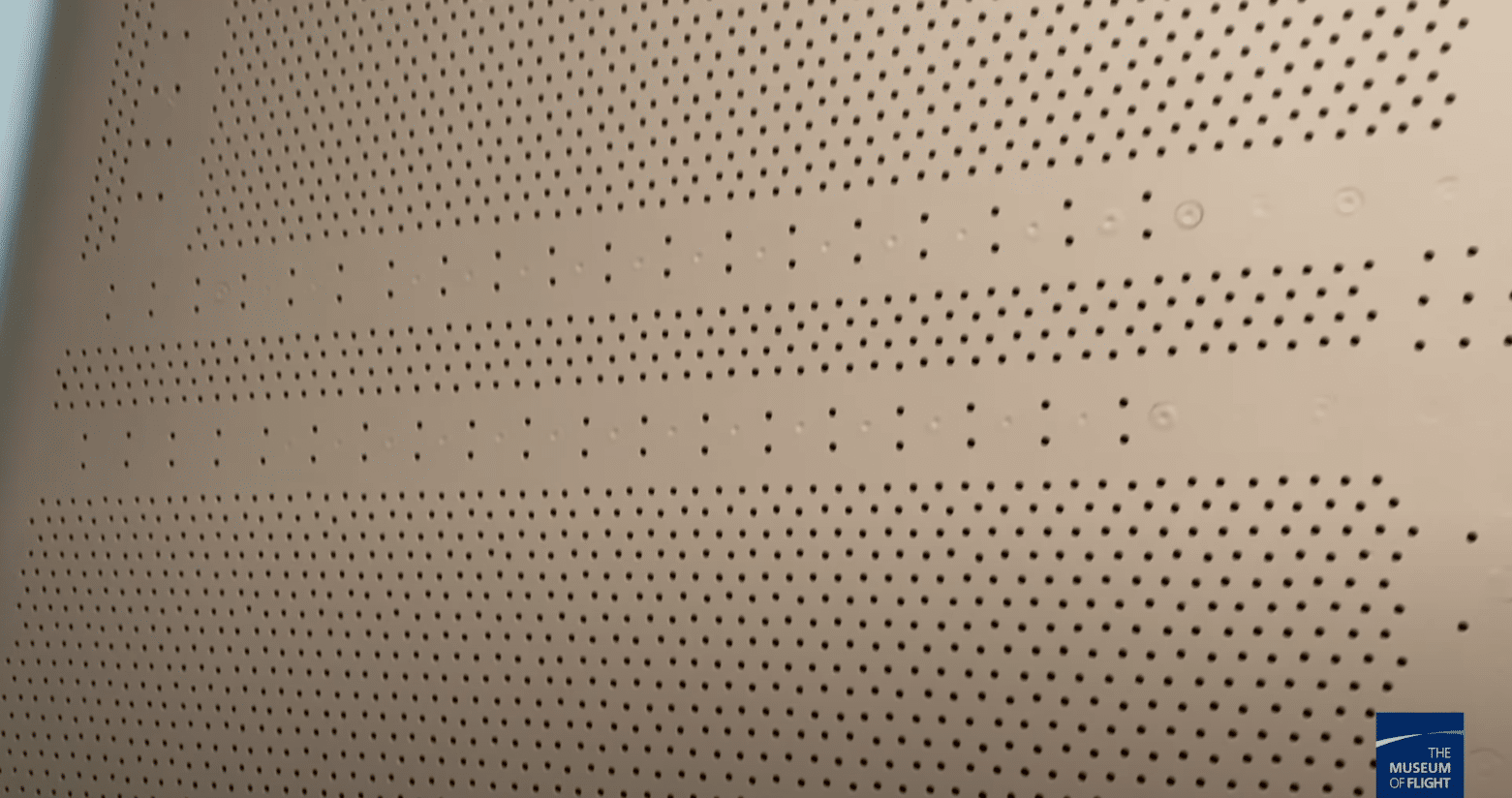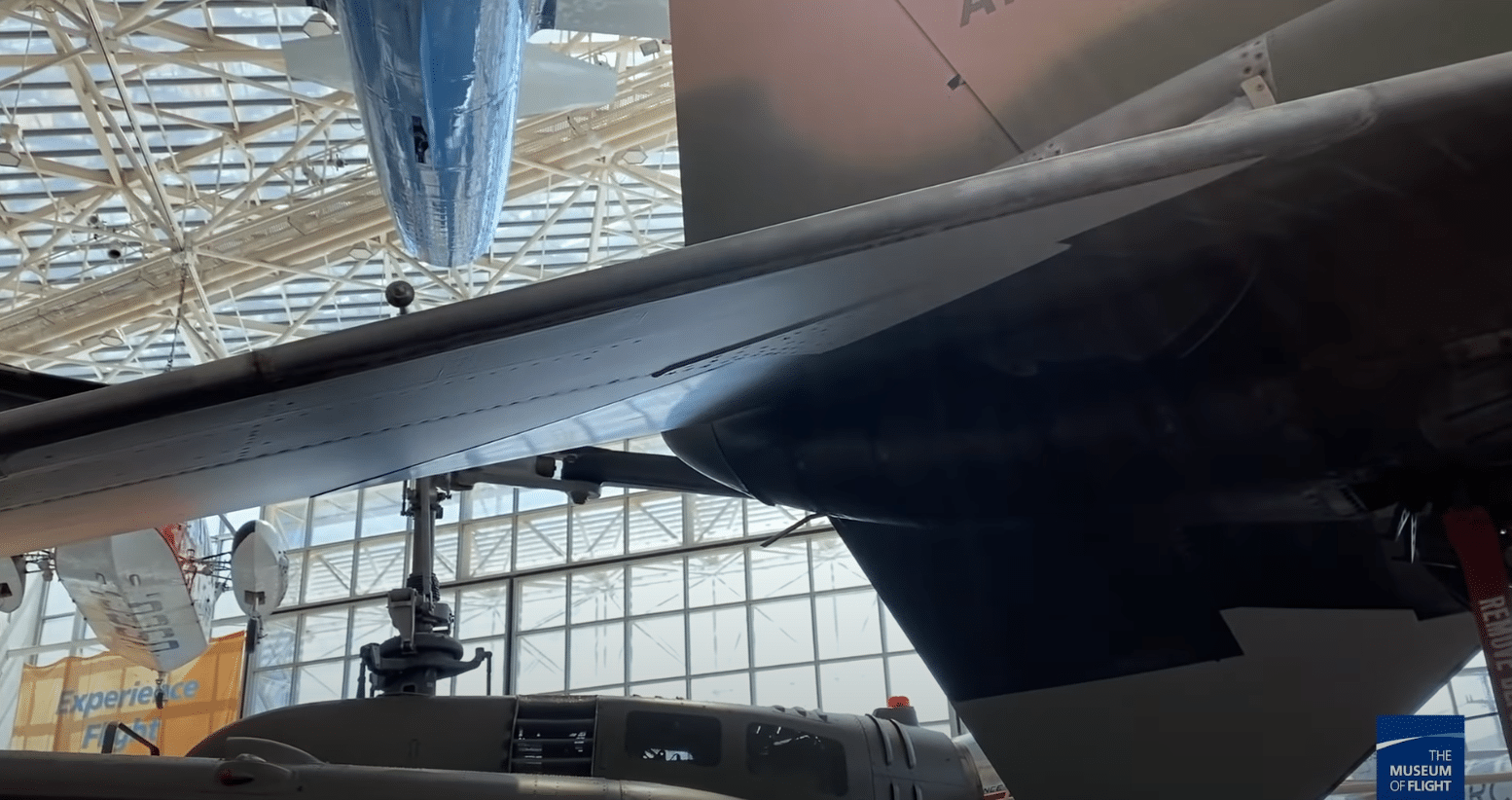
YouTube / The Museum of Flight
One of the distinct features of the F-4 is the “splitter plate.” Splitter plates are used to control the airflow into the engine by diverting the boundary layer away from the engine intake. Plates found on the F-4 have holes in them, allowing the air to get sucked into the holes, further reducing the boundary layer.

The F-4’s splitter plates each have 12,800 holes!
An F-4’s rear tail wings are angled downward at 23 degrees for two reasons. The first reason is so that they’re out of the way of the exhaust plumes. The other is because it provides better maneuverability at high angles of attack.

On March 10, 1967, Bob Pardo and his wingman were over North Vietnam when they got hit by anti-aircraft fire. Pardo ordered his wingman to drop his arresting gear and came up behind him. Pardo then literally pushed his wingman’s plane with his own F-4.

He put the front part of the armored glass of his windscreen on the end of the tail hook, pushing his wingman 88 miles, and got them into Laos where they were able to eject and get picked up by friendly forces. By the time they were in Laos, the two were only about 6,000 ft up because the tail hook kept slipping.